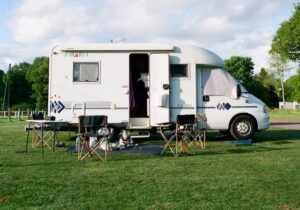Dan Cartwright has over 12 years of experience in the caravan and motorhome industry. He is a judge for a number of prestigious leisure vehicle awards and regularly heads off in his motorhome with his family. Every week, Dan shares his insights with the community. Here’s what he has to say this week.
This year, I have the privilege of being a judge on the Motorhome and Campervan Design Awards, for the Caravan and Motorhome Club. The judging is done through a hybrid system, which means every vehicle is scored on paper before we head to the Caravan, Camping and Motorhome Show at the Birmingham NEC in February. There, we’ll inspect each entry manually and adjust the scores as needed.
This week, I’m not offering any insider secrets as to which vehicle will win in its class, although something has struck me during the judging process. The market for van conversions has truly come of age over the last five years, with an impressive amount of flexibility now available.
Van conversions are typically larger than campervans and range in length from just under six metres up to more than seven. They often include an indoor shower facility, a cooking area, several belted seats and various sleeping configurations. Generally taller than a campervan, these vehicles are often based on models like the Fiat Ducato, Ford Transit and Peugeot Boxer.
How has the van conversion market changed?
In previous years, the market was very limited. Realistically, your only option was to have two bench seats in the back, with a pair of driving seats in front of two more for passengers and a central washroom and kitchen. However, things have changed for van conversions. Now, it’s one of the fastest-growing areas of the entire leisure vehicle industry, with makes and models catering for all types of holidays and families.
Van conversions are excellent entry vehicles, too. They retain their value, are relatively easy to manoeuvre and are well-suited to all road conditions. Over the last three or four years, manufacturers have taken notice that more people want to use them for a wide range of trips and activities. So, here are some of the latest innovations on the market for different holidaymakers.
Families
Lately, there’s been a proliferation of van conversions with pop tops. These have been around for a while, but now there are lots of options to choose from, providing an excellent way to bolster your sleeping arrangements without compromising on space.
You can even get models with a double bunk at the back if you don’t want a pop top, as well as installing a single bed between the driver and passenger seats. These layout options mean that, depending on the size of your family, it’s worth having a good look around and experiencing different configurations before buying.
Couples
There are now far more dedicated van conversions for couples than we’ve seen in previous years. Regardless of the number of berths, past options would always cram in a rear seat to suit four people.
Some manufacturers have been brave and produced vehicles that only seat two, which means couples no longer need to drag an additional pair along for their trips. As a result, you can now benefit from the additional space that would otherwise have been taken up.
Activity lovers
Plenty of newer models come with dedicated kit storage facilities in the rear. In some, this can even double as a bed, while many have pop tops, so holidaymakers set on doing activities can leave their garage set up for bikes, watercraft and any other vital gear.
You can find certain van conversions that also include tie-down points and even detachable lockers, which you can bring along to keep your items safe. So, if your holiday plans include a busy schedule of hobbies, it might pay to see what’s on the market right now.
Comfort seekers
Touring in a leisure vehicle always comes with a compromise based on available space, but there are now some van conversions that offer a taste of luxury. With just a quick look, you’ll find models that have super king-size beds and separate shower cubicles and toilets.
Again, if you’re planning to use a van conversion as a holiday vehicle and it suits your family or touring partners, we strongly recommend that you have a look around to see what’s on the market.
As a word of caution, the supply of cabs or base vehicles is currently low, but the demand remains high, which means that you might experience long waiting times for the perfect model. In the meantime, put in some effort online – or at one of the several shows this year – to see the huge variety of van conversions that are flourishing in 2023.
Photo credit: Clay Banks / Unsplash




